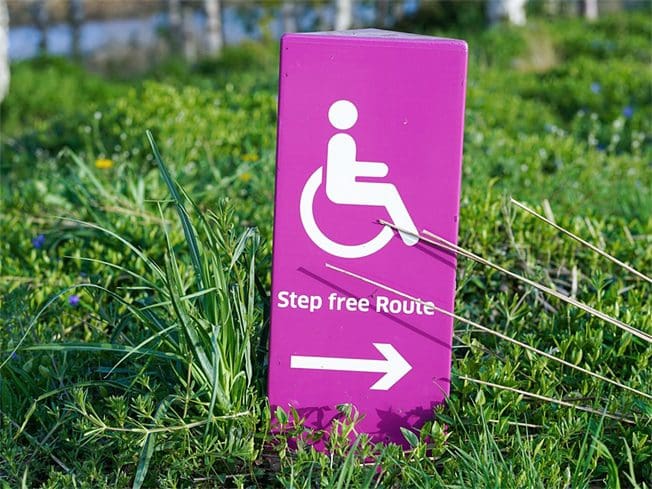words Alexa Wang
There are a variety of reasons why an individual may find themselves with reduced mobility. Whether it’s due to injury, disability, or through the process of aging, many people find themselves unable to navigate the world in the same way that they used to.
One of the critical parts of this is something a lot of us take for granted; the ability to move through our own homes.

Whether it’s yourself or a loved one who is struggling, it’s essential to recognize that many of these difficulties can be alleviated through simple fixes. There are many ways to make your home more accessible. To provide you with some inspiration, here’s our list of four ways you can make your home easier to navigate.
1 . Replace Steps With Ramps
For obvious reasons, steps pose difficulty to those with reduced mobility. They’re entirely impossible to use if you’re in a wheelchair, and even if you still possess the use of your legs, they can cause uncomfortable exertion. Unfortunately, they’re present in almost all houses. The vast majority of doorways have some form of steps leading up to them, but they can also be found within the home too.
Replacing them with accessible ramps can improve accessibility immediately and reduce the strain put on those with reduced mobility. Even better, they don’t have to be permanent additions. Temporary ramps can be placed when needed and stored away once finished with, so no aesthetic appeal is lost.
2 . Fit a Stair-lift
Though often stereotyped as purely being for the older members of society, stair-lifts can be hugely beneficial additions to anyone who struggles with reduced mobility in a home with a staircase. Similarly to steps, stairs can cause deeply painful exertion for some and are impossible to navigate for others. Stair-lifts solve this problem.
They’re an excellent option for people with homes that can’t be drastically altered to add an in-home elevator (which can be expensive). There’s a wide variety of stair-lifts available to suit every need, and some of them can even be put away instead of being permanent fixtures. This can be helpful for homes with multi-able people, who could find the stair-lift cumbersome, but with the plethora of designs available, it’s easy to find the right one for you.
3 . Remove Door Handles
One of the more unexpected, and largely overlooked, aspects of increased accessibility is the removal of door handles. Reduced mobility comes in a variety of forms, and this can include weakened arms and wrists that struggle with the pulling and twisting involved with getting a door open. Wheelchair users can often struggle with reaching door handles too.
For non-disabled people, it might seem like the most natural thing in the world, but for those with reduced mobility, they can pose a real challenge. Replacing them with doors that can be easily pushed open can make a huge difference, while only being a small and simple alteration.
4 . Make Use of Handrails
Getting up and down from sitting can pose a significant challenge to those with reduced mobility. This can include getting out of bed, standing up from the sofa, getting out of the bathtub or shower, there are many ways we move throughout our days that we don’t appreciate until we begin to struggle. Fixing a handrail to many of the critical areas you struggle with can make a massive impact on your (or your loved ones’) ability to get around and reduces the risk of falls, particularly in the bathroom.
Living with reduced mobility can be a challenge, but it doesn’t have to feel impossible. There are numerous ways you can create a more accessible space in your home, without having to make drastic alterations.










